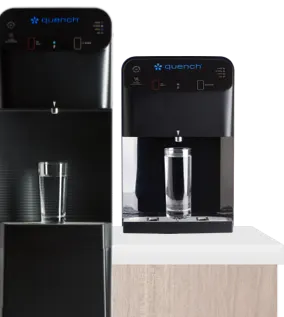Drinking fountain, water fountain, or bubbler – public access to drinking water was once a revered feature of public life, now they are fading from America’s parks, schools, and stadiums. Jim Salzman, author of Drinking Water: A History, says they’re “going the way of pay phones.”
Even the International Plumbing Code, which is followed by builders in most cities, lays out recommendations on matters such as the number of bathrooms an office should have, how pipes should work, etc. In their 2015 edition of the manual has slashed the number of required fountains for each building by half.
Many point to the increase in consumption of bottled water as a reason for the decreased number of public drinking fountains. But, drinking bottled water is more of a symptom than a cause. In the past two decades, the public attitude toward public space, government, and water itself has changed. Simply put as a public, we don’t trust drinking fountains anymore.
The modern era’s first free public water fountain was unveiled in London in 1859. At the time, the rich were buying water that was brought in from the country. The poor on the other hand were drinking bottled water from the sewage-infested Thames.
However, the public drinking fountain changed all that by making clean water accessible for free. New York debuted its drinking water at City Hall Park in 1859 and was soon followed by Detroit, Philadelphia, and San Francisco. By 1920, most municipalities were providing free, chlorinated water and the public health benefits were obvious. Urban deaths declined by half between 1900 and 1940.
“Municipal chlorinated water was considered yet another modern evolution,” says Francis H. Chapelle, a hydrologist and the author of “Wellsprings: A Natural History of Bottled Spring Waters.” “It basically put bottled water out of business.” Bottled water had become “low class” and was only used in offices and factories that couldn’t afford plumbing.
The celebration of the tremendous technological and political capital it takes to provide clean drinking water to the community changed in the 1970s. In 1977, Europe’s Perrier spent $5 million on advertising in NYC, selling itself as a chic, upscale product. By 1982, U.S. bottled-water consumption had doubled to 3.4 gallons per person per year. U.S. beverage producers saw an opportunity and followed Perrier’s lead. In 1994, Pepsi launched Aquafina and Coca-Cola launched Dasani in 1999. However, Aquafina and Dasani could not position themselves as a lifestyle-defining product, so they made Americans afraid of the tap.
With the rise of environmentalism, the American public was receptive to this message. The government drafted measures, including 1974’s Safe Drinking Water Act, making water much safer by limiting dumping and setting contaminant standards. But these new standards had an unintended consequence: Because municipalities had to notify residents of contamination immediately, Americans were now getting bombarded with warnings of possible risks.
Public water faced more scrutiny in 1986, when the EPA released a study that showed that tap water used by at least 38 million Americans contained dangerous levels of lead. Americans who said they were extremely concerned about tap water pollution jumped from 32% in 1973 to 66% in 1988, according to Gallup. In response bottled water sales rose. In 1987, Americans consumed about 7 gallons of bottled water per person annually, by 2014 Americans were drinking 34 gallons per year, more than milk or beer.
According to Gallup, 77% of Americans are concerned about pollution in their drinking water. If the public doesn’t trust tap water, it doesn’t trust water fountains. A new fountain costs between $300 and $4,500 to install, depending on plumbing and location, so when municipal budgets are tight, cutting drinking fountains may be one way to reduce costs without angering the public.
Our suggestion? Install a filtered water cooler. Government agencies and higher education institutions have tight budgets, need to meet sustainability goals, and need to stay ahead of “ban the bottle” movements. By switching to an Energy Star-rated Quench filtered water cooler, government agencies and higher education institutions can lower its carbon footprint while saving taxpayers as much as 80% versus traditional bottled water delivery. And filtered water coolers are like miniature water purification plants: the good stuff (like minerals) stays in, the bad stuff (like chlorine, lead, phosphates, and bacteria) comes out, leaving you with clean, great-tasting water delivered to your glass.
Talk to a Quench Water Expert today to find the perfect filtered water cooler for your business location. Call us at 844-303-2841 or click on the green “Get a Free Quote” button at the top of our website and a local water expert will contact you directly. Water up!








